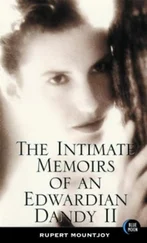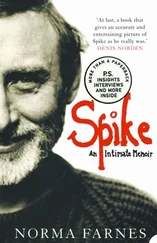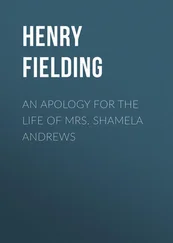“I think that’s a great idea, Mrs. Kennedy.” Truly, I was so glad to hear that she was considering Camp David. I had no doubt she would love it.
As we walked, with the smell of the ocean and the balmy breeze surrounding us, I tried to explain what it was about Camp David that was so unique. She had a keen sense of history, and I figured that she might be more excited about the prospect of spending time there once she understood how the retreat had been utilized by previous presidents.
The heavily wooded property is about 125 acres and sits on one of the highest elevations in the Catoctin Mountains in Maryland. Originally developed in the 1930s by the Works Progress Administration as a camp for federal government employees and their families, President Franklin Delano Roosevelt requested it be converted to a presidential retreat in 1942 and named it “Shangri-La.”
Roosevelt brought Winston Churchill there, and it was in this secluded environment that they planned the Allied invasion of Europe during World War II. When Eisenhower became president, he changed the name from Shangri-La to Camp David, after his firstborn grandson.
“The reason I think you will enjoy it, Mrs. Kennedy,” I said, “is because it is so private—much more so than Glen Ora.”
“Really?”
“Absolutely. It’s operated by the U.S. Navy and the entire property is surrounded by a high wire fence that’s closely patrolled by armed Marine guards, as well as constant electronic surveillance. It is so secure and so private that President Eisenhower thought it the best place to confer with Premier Khrushchev about the Cold War. They spent two days at Camp David.”
“Yes, I knew that,” she said. “But I guess I never really thought about the reason why Eisenhower chose to entertain him there.”
“Believe me, Mrs. Kennedy, it is a unique place that very few people in the world have ever had the opportunity to experience. There are paths and trails throughout the woods—you can literally walk for miles and miles without seeing another human being. It’s really the only place where you and the children and the president can roam freely without Secret Service agents hovering over you.”
She broke into a smile and with a glimmer in her eye, she quipped, “Oh, Mr. Hill, if you had told me that from the beginning, I probably would have gone there right after the Inauguration and never left!”
We laughed and continued walking and talking, and I got the feeling we would soon be spending a lot of time at Camp David.
ON SUNDAY, MARCH 3, I flew with Mrs. Kennedy, Caroline, and John on the Caroline back to Washington. When we landed in the section of the terminal for private planes, I was surprised to see President Kennedy waiting there to greet his family. It was somewhat unusual for him to make the effort to come to the airport, when we could easily make it back to the White House in less than ten minutes, but the president had clearly missed his family and was eager to see them.
The very next weekend, we were off to Camp David.
The president’s schedule didn’t allow him to come up until Sunday, but Mrs. Kennedy was eager to get out of Washington, so we drove her and the children up on Saturday.
Once you are on the grounds of Camp David, it is so secluded, so private, that you feel as if no one could ever find you, even if they tried. The views are spectacular, and the accommodations are elegantly rustic, with all the comforts befitting the President of the United States.
The centerpiece of the property is the large and luxurious presidential residence called Aspen Lodge, which has stunning views of the surrounding countryside. There is ample room for guests in well-appointed cabins that have names like Rosebud, Dogwood, and Holly, and the activities on the property are endless. There is a beautiful heated outdoor swimming pool, a putting green, driving range, a bowling alley, and even facilities for skeet shooting. Plus there are miles and miles of well-tended trails for walking and horseback riding. Brand-new stables had been built—complete with nameplates for Sardar and Macaroni—so that the horses could be boarded there when the president and Mrs. Kennedy were in residence. Meanwhile, Charlie the Welsh terrier came up in the car with the kids.
Everybody loved being at Camp David, just as I had anticipated. John loved tromping through the woods, finding sticks that immediately became imaginary swords or rifles, while Caroline would ride Macaroni around the athletic field or through the trails, as Mrs. Kennedy walked along.
From then on, Camp David became the regular weekend retreat for the entire spring of 1963. President Kennedy would arrive sometime Saturday and leave Sunday afternoon or Monday morning, while Mrs. Kennedy and the children would normally arrive prior to the president. Both the president and Mrs. Kennedy were huge history buffs, and the location of Camp David allowed them to take Caroline and John to the nearby historic sites of Gettysburg and Antietam.
As it turned out, during the months of April, May, and June 1963, Mrs. Kennedy spent far more time at Camp David than at the White House. Frequently, the children would return with the president on Sunday, since Caroline had school, and Mrs. Kennedy would stay at Camp David a day or two longer.
The first time she decided to stay on after the president had left, I couldn’t help but tease her about it.
“So, Mrs. Kennedy, I guess Camp David isn’t as bad as you thought it would be.”
She smiled and said, “Oh, Mr. Hill, I just couldn’t have imagined that it would be so wonderful. It has everything one could want or need, and so beautiful, too. It’s strange, isn’t it? But I feel like I have a sense of freedom here more than anywhere else.”
She was the most idolized woman in the world, and she could have anything she wanted, but what she craved most was privacy.
SOON IT WAS Easter, and we were back to Palm Beach, back to the C. Michael Paul residence. Mrs. Kennedy remained secluded, venturing out only for our frequent walks, and the daily cruise on the Honey Fitz with the president and other guests. She decorated Easter eggs with the children, and spent time almost every day visiting her father-in-law, Ambassador Kennedy. She was consumed with final preparations for the house at Rattlesnake Mountain, and would sit by the pool, her ever-present yellow legal pad in hand, writing instructions and notes as to how she wanted things done. No longer appreciating the implications of “rattlesnake,” she began calling the house Atoka in reference to the area in which it was located.
When we were in Palm Beach, Mrs. Kennedy didn’t have her normal social and secretarial staff with her, so often Paul Landis and I would act as the go-betweens, whether it be with staff, friends, family, or even the president on occasion. The truth was, Mrs. Kennedy was very hard to resist. We adored her. Our job was to protect her, and as long as nothing interfered with that mission, we would walk on water if she asked. And she knew it.
PRESIDENT KENNEDY ATTENDED pre-Easter services at St. Ann’s and St. Edward catholic churches, but on Easter Sunday the family celebrated the holy day with a private Mass at Ambassador Kennedy’s residence, as they had done the previous year. It was a sign of the tremendous respect the president had for his father to make these special arrangements—so that the elder Kennedy, wheelchair-bound and unable to communicate, could worship with his son, the President of the United States, in privacy.
By this point, Mrs. Kennedy was well into her pregnancy, and much as she would have liked to simply remain in hiding until the birth, she acquiesced that it was time to go public. On Monday, April 15, Pierre Salinger held a press conference in which he read a statement that said, “The White House announced today that Mrs. Kennedy is expecting a baby in the latter half of August. Mrs. Kennedy has maintained her full schedule for the past few months. Because of this active schedule, her physicians have now advised her to cancel all her official activities.”
Читать дальше











